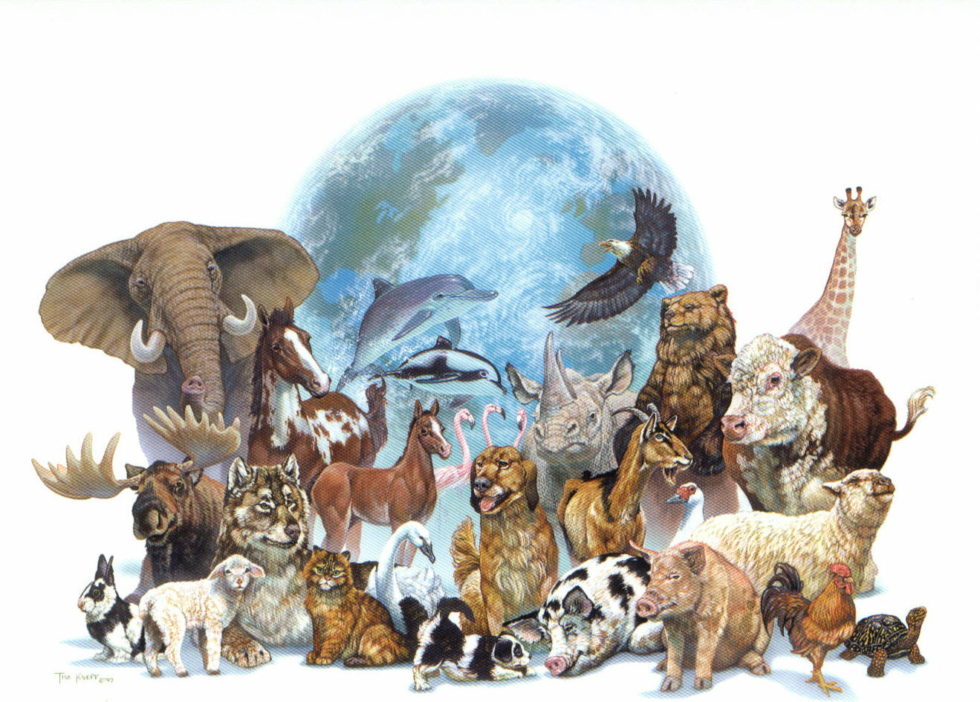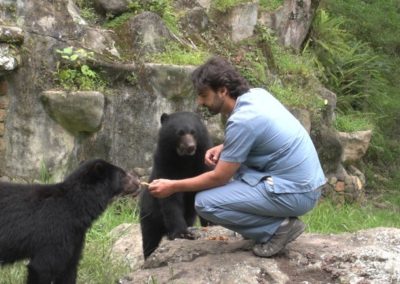The Multidisciplinary Nature of Geography
Geography, understood as a multiparadigmatic science, has the sufficient versatility to merge with other sciences whose core principles interact directly with geographical space. One of the most expressive ways for a geographer to expand their knowledge is to use the Geography–Biology binomial. As the latter’s subject of study is living beings, it considers the physical environment a primary element, as it acts as a container for plant and animal species. In this sense, Biogeography emerges as one of the branches with the greatest possibilities for producing scientific knowledge.
Geographical space is studied from different schools of scientific thought, and each of them has analytical categories that are defined based on the level of detail they use, the epistemological foundations on which they rest, and the methodologies they apply. One of the most notable paradigms within biogeographical study is ‘Environmental Geography,’ whose cornerstone is the landscape as a category of spatial analysis.
The Origins of Environmental Geography
Environmental Geography generally establishes a marked duality that arose at the beginning of the 20th century, led by the two main approaches that shape it: French Possibilism and German Determinism (Gómez and Rojas, 2009). The German School, led by Friedrich Ratzel, based its thought on the idea that the physical environment is the element that determines how humans settle on the planet. Regarding this, Churchill Semple (1968) states that “Man is a product of the Earth’s surface. He is not merely a child of the Earth, dust of its dust, but it also feeds him in his thoughts, confronts him with difficulties, hardens his body, and sharpens his spirit.” This principle is partially extrapolable to animal species, as their processes of adaptation, evolution, and succession depend, to a most significant extent, on the physical and natural conditions of the geographical space they occupy.
Among the main influences that helped forge Ratzel’s thought were the ideas of Charles Darwin, whose ideas can be summarized in the capacity for adaptation and survival that plant and animal species are subjected to, based on competition with other species and exposure to the physical environment they occupy.
Geographical Determinism in Animals
Animal species have morphological, physiological, and ethological characteristics that are diverse enough to justify the existence of innumerable taxonomic systems to facilitate their study. Each classification group has unique characteristics that differentiate it from others, and these qualities are largely forged by the prevailing geographical conditions in their habitat. The mentioned influence of the environment on animal species is due to astronomical and geographical factors, whose dynamics are joint and interdependent.
Latitude, climate, the tilt of the Earth’s axis, ocean currents, winds (local and continental), altitude, relief, soil, rotational/translational movements, and vegetation are factors that, by themselves, are insufficient to establish a bidirectional relationship with animal species and achieve the determinism referred to in the previous paragraphs. Still, when they coexist, they give rise to a reality where the phenotype is a geographical model.
A brief description of the Environmental Geography paradigm, as previously outlined, also provides a glimpse into some methodological aspects used in systematizing biogeographical variables. One of them—and perhaps the most significant—is the set of rules systematized based on atmospheric temperature (an integral element of the climate factor), to which animal species are subject.
If latitude is considered, the Earth is divided into two hemispheres (North and South); the line that separates both is the Equator, and as one ascends or descends, latitude gains a numerical value expressed in degrees, North or South according to the hemisphere. As latitude increases, temperature decreases. The Earth’s quasi-spherical shape means that its curvature deflects the sun’s rays the closer one gets to the poles. All of this gives rise to Allen’s rule, which, in a synthesized form, points to the tendency for the so-called distal body parts (tail, legs, and ears) in animal species to be smaller, thus reducing the exposed surface area through which heat can be lost. For this reason, in biomes such as the tundra and boreal taiga, species with these characteristics are found (lynx, bear, ox, moose, mountain goat, among many others).

Rapaport’s Rule and Biodiversity
Emphasizing latitude again, Rapaport’s rule emerges, whose biogeographical principle states that the number of species is lower at higher latitudes. Regions such as the Norwegian hinterland of the Arctic Circle or Argentine Patagonia harbor less biodiversity than the sub-equatorial Amazon, as the geographical conditions in the first two are indeed inhospitable, while in the Amazon rainforest, known as “the lung of the world,” ecological dynamics are greater due to an immense variety of river basins, soils with eager pedogenetic development, and irreducibly vigorous vegetation. All of this is reflected, then, in a high number of animal species.
A single geographical factor (climate, in this case) allows for the existence of a whole compendium of principles that explain the incidence exerted by geographical space on the animal species that occupy it. Even by omitting other foundations in this section, such as Gloger’s rule (the color of a warm-blooded animal is warmer in dry climates than in humid climates), Wilson’s rule (sheep have wool in cold regions and hair in warm regions), or Bonsa’s rule (the thickness of animal skin is greater in warm regions to protect them from bites from others), the possibilities for explaining the geographical determinism prevalent in animal species increase with the study of the physical environment as a system.




